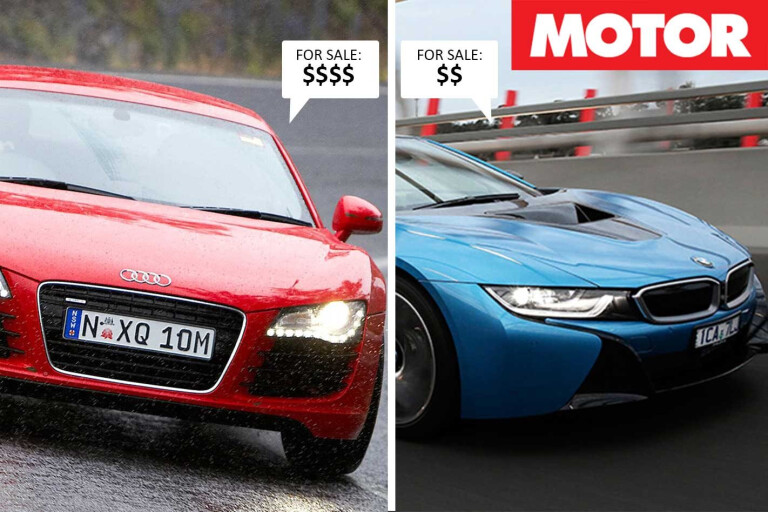
Electric and hybrid performance cars are underperforming in Australian-market resale values across a variety of segments, particularly those at the upper-end of the market where traditional petrol V8 grunt is most clearly dominating newfangled battery power.
With the first electric and hybrid performance cars now tallying three years old – the resale benchmark for new vehicles – values expert Redbook has given its verdict on how the likes of the BMW i8, Porsche Panamera S E-Hybrid and Tesla Model S P85D are performing compared with their internal combustion engine (ICE) equivalents; all with circa-35,000km.
And the news isn’t good for lovers of the environment.
BMW’s futuristically styled i8 cost $299,000 when new three years ago, but according to the values expert it has retained less than half its purchase price – just $145,500 when sold privately, or a staggeringly low $128,700 for a trade-in.
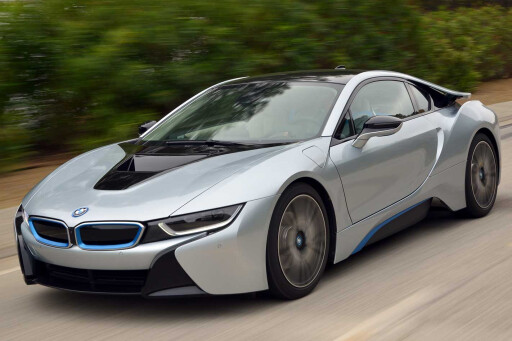 The scissor-door 1.5-litre turbo three-cylinder/electric motor supercar claims to slurp 2.1L/100km and emit 49g/km of CO2, which promises significant fuel savings for buyers.
The scissor-door 1.5-litre turbo three-cylinder/electric motor supercar claims to slurp 2.1L/100km and emit 49g/km of CO2, which promises significant fuel savings for buyers.
However, Audi’s previous-generation R8 asked $308,010 when new in 2015, and Redbook tells that it will still fetch $176,900 privately or $159,700 in a trade.
Despite costing only $9000 more than the i8 when new, the 4.2-litre naturally aspirated V8-engined manual supercar has kept up to $31,400 more in its coffers compared with the BMW. And that’s a lot of money to be saved to fill a model rated at 14.4L/100km and 337g/km of CO2…
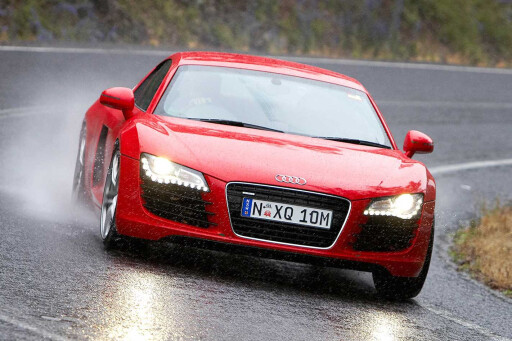 Do premium buyers care more about performance than economy? You could say that, except the new-for-2015 i8 claims a 4.4-second 0-100km/h compared with 4.8sec for a generation of R8 that came out in 2007 and was, by then, in the last year of its lifecycle.
Do premium buyers care more about performance than economy? You could say that, except the new-for-2015 i8 claims a 4.4-second 0-100km/h compared with 4.8sec for a generation of R8 that came out in 2007 and was, by then, in the last year of its lifecycle.
But this resale trend continues in Porsche showrooms, too.
A 2015 Panamera S E-Hybrid asked $285,300 new, with its 3.0-litre blown V6 and electric motor spurring it to 100km/h in 5.5sec while using 3.1L/100km and emitting 71g/km of CO2.
But privately it will now have kept just $126,600 – and if you’re planning a trade-in, expect to have retained just 40 per cent of the original price at $114,200 according to the Redbook.
Let’s compare the pair, shall we? A 2015 Panamera GTS needed $320,100 new, or $35K more than the hybrid, with its 4.8-litre naturally aspirated V8 soaring to deliver 4.4sec 0-100km/h performance, gulping 10.7L/100km and spitting out 249g/km of CO2.
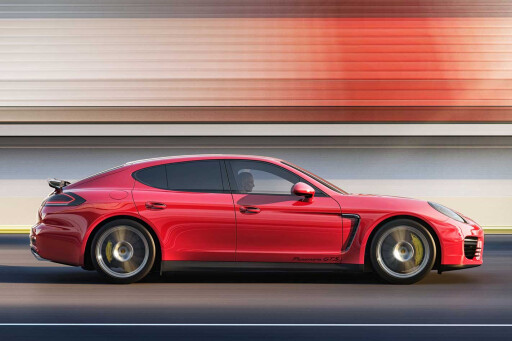 Yet now it will still return $193,700 privately or $174,700 on the dealer trade-in yard – that’s up to $67K more than its battery equipped sibling, a saving of $32K in total after the greater up-front cost has been taken into consideration. Again, that’s a lot of money on 98RON.
Yet now it will still return $193,700 privately or $174,700 on the dealer trade-in yard – that’s up to $67K more than its battery equipped sibling, a saving of $32K in total after the greater up-front cost has been taken into consideration. Again, that’s a lot of money on 98RON.
Meanwhile the darling of the electric brigade, a 2015 Tesla Model S P85D, gets closest to matching its performance-ICE equivalent. New? $181,500. Sale three years on? $115,400 private, $103,800 trade-in, with 64 per cent and 57 per cent retained respectively.
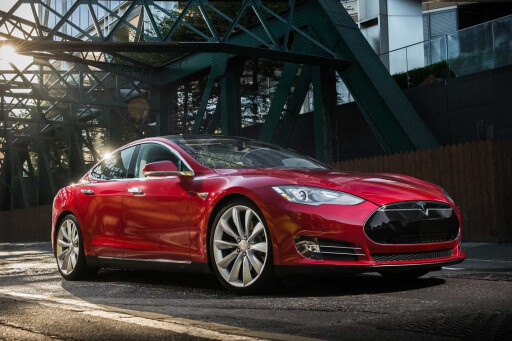 The 3.3sec 0-100km/h electric liftback will outgun a 2015 Mercedes-AMG C63 S and the 4sec claim from its mighty 375kW 4.0-litre twin-turbocharged V8 engine. The AMG started life as a $154,900 proposition, though, saving a buyer $25K over the Tesla.
The 3.3sec 0-100km/h electric liftback will outgun a 2015 Mercedes-AMG C63 S and the 4sec claim from its mighty 375kW 4.0-litre twin-turbocharged V8 engine. The AMG started life as a $154,900 proposition, though, saving a buyer $25K over the Tesla.
Now it will return $97,100 privately and $85,500 trade, reducing the gap to $18K at today’s values. So essentially a C63 S buyer has had $7K extra to spend on premium unleaded in three years.
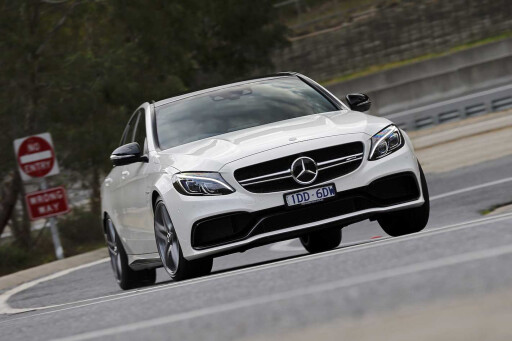 As manufacturers increasingly switch to using electricity in premium/performance cars, they might need to accept that cubic capacity inside a cylinder count still holds greater value in the buyers’ minds – and after three years it leaves them with plenty to spend at the bowser.
As manufacturers increasingly switch to using electricity in premium/performance cars, they might need to accept that cubic capacity inside a cylinder count still holds greater value in the buyers’ minds – and after three years it leaves them with plenty to spend at the bowser.

COMMENTS